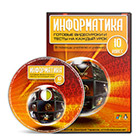Microsoft Windows is a group of several graphical operating system families, all of which are developed, marketed, and sold by Microsoft. Each family caters to a certain sector of the computing industry. Active Windows families include Windows NT and Windows Embedded; these may encompass subfamilies, e.g. Windows Embedded Compact (Windows CE) or Windows Server. Defunct Windows families include Windows 9x, Windows Mobile and Windows Phone.
Microsoft introduced an operating environment named Windows on November 20, 1985, as a graphical operating system shell for MS-DOS in response to the growing interest in graphical user interfaces (GUIs).[5] Microsoft Windows came to dominate the world's personal computer (PC) market with over 90% market share, overtaking Mac OS, which had been introduced in 1984.Apple came to see Windows as an unfair encroachment on their innovation in GUI development as implemented on products such as the Lisa and Macintosh (eventually settled in court in Microsoft's favor in 1993). On PCs, Windows is still the most popular operating system. However, in 2014, Microsoft admitted losing the majority of the overall operating system market to Android,[6] because of the massive growth in sales of Android smart phones. In 2014, the number of Windows devices sold was less than 25% that of Android devices sold. This comparison however may not be fully relevant, as the two operating systems traditionally target different platforms. Still, numbers for server use of Windows (that are comparable to competitors) show one third market share, similar to that for end user use.
As of December 2017, the most recent version of Windows for PCs, tablets, smart phones and embedded devices is Windows 10. The most recent versions for server computers is Windows Server 2016. A specialized version of Windows runs on the Xbox One video game console
Microsoft, the developer of Windows, has registered several trademarks each of which denote a family of Windows operating systems that target a specific sector of the computing industry. As of 2014, the following Windows families are being actively developed:
Windows NT: Started as a family of operating systems with Windows NT 3.1, an operating system for server computers and workstations. It now consists of three operating system subfamilies that are released almost at the same time and share the same kernel. It is almost impossible for someone unfamiliar with the subject to identify the members of this family by name because they do not adhere to any specific rule; e.g. Windows 7 and Windows 8.1 are members of this family but Windows 3.1 is not.
Windows: The operating system for mainstream personal computers, tablets and smartphones. The latest version is Windows 10. The main competitor of this family is macOS by Apple Inc. for personal computers and Android for mobile devices (c.f. Usage share of operating systems § Market share by category).
Windows Server: The operating system for server computers. The latest version is Windows Server 2016. Unlike its clients sibling, it has adopted a strong naming scheme. The main competitor of this family is Linux. (c.f. Usage share of operating systems § Market share by category)
Windows PE: A lightweight version of its Windows sibling meant to operate as a live operating system, used for installing Windows on bare-metal computers (especially on many computers at once), recovery or troubleshooting purposes. The latest version is Windows PE 10.
Windows IoT (previously Windows Embedded): Initially, Microsoft developed Windows CE as a general-purpose operating system for every device that was too resource-limited to be called a full-fledged computer. Eventually, however, Windows CE was renamed Windows Embedded Compact and was folded under Windows Compact trademark which also consists of Windows Embedded Industry, Windows Embedded Professional, Windows Embedded Standard, Windows Embedded Handheld and Windows Embedded Automotive.[8]
The following Windows families are no longer being developed:
Windows 9x: An operating system that targeted consumers market. Discontinued because of suboptimal performance. (PC World called its last version, Windows ME, one of the worst products of all times.)[9] Microsoft now caters to the consumers market with Windows NT.
Windows Mobile: The predecessor to Windows Phone, it was a mobile phone operating system. The first version was called Pocket PC 2000; the third version, Windows Mobile 2003 is the first version to adopt the Windows Mobile trademark. The last version is Windows Mobile 6.5.
Windows Phone: An operating system sold only to manufacturers of smartphones. The first version was Windows Phone 7, followed by Windows Phone 8, and the last version Windows Phone 8.1. It was succeeded by Windows 10 Mobile.

 Получите свидетельство
Получите свидетельство Вход
Вход












 Windows operating system (17.59 KB)
Windows operating system (17.59 KB)
 0
0 156
156 1
1 Нравится
0
Нравится
0


